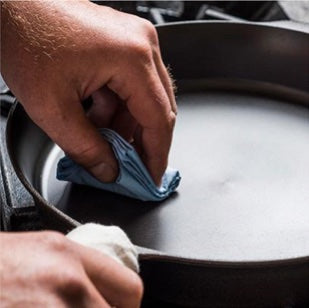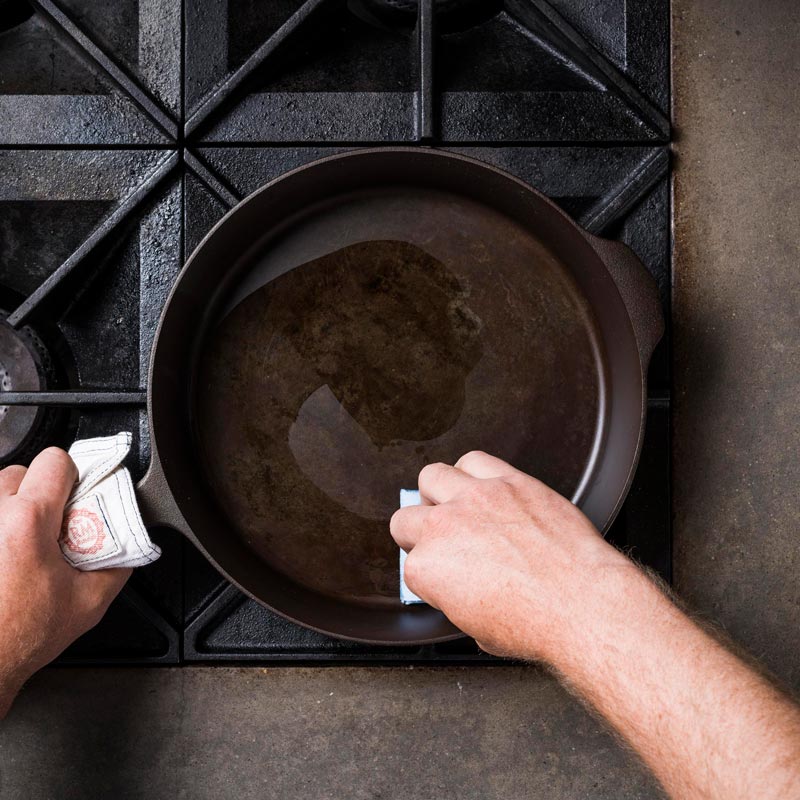Seasoning is what makes your Field Skillet the best tool for everyday cooking. The best way to build up — and maintain — seasoning on any cast iron skillet is to cook with your pan, regularly. Field Skillets arrive with two coats of grapeseed oil seasoning, but some folks like to start by seasoning new cast iron to help break in the pan.
It’s also good to have a go-to cast iron seasoning method ready for care and maintenance purposes. If you ever need to patch up your seasoning after, say, cooking with too much acid or finding a spot of surface rust, these instructions will get your pan back in top shape.







